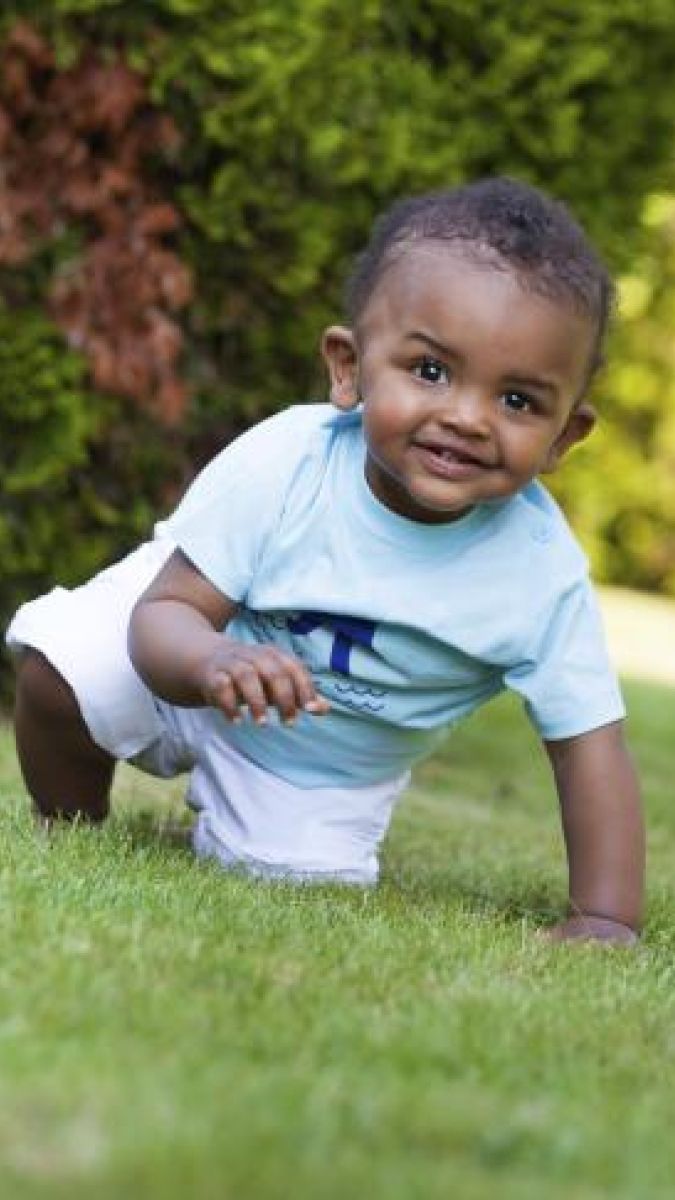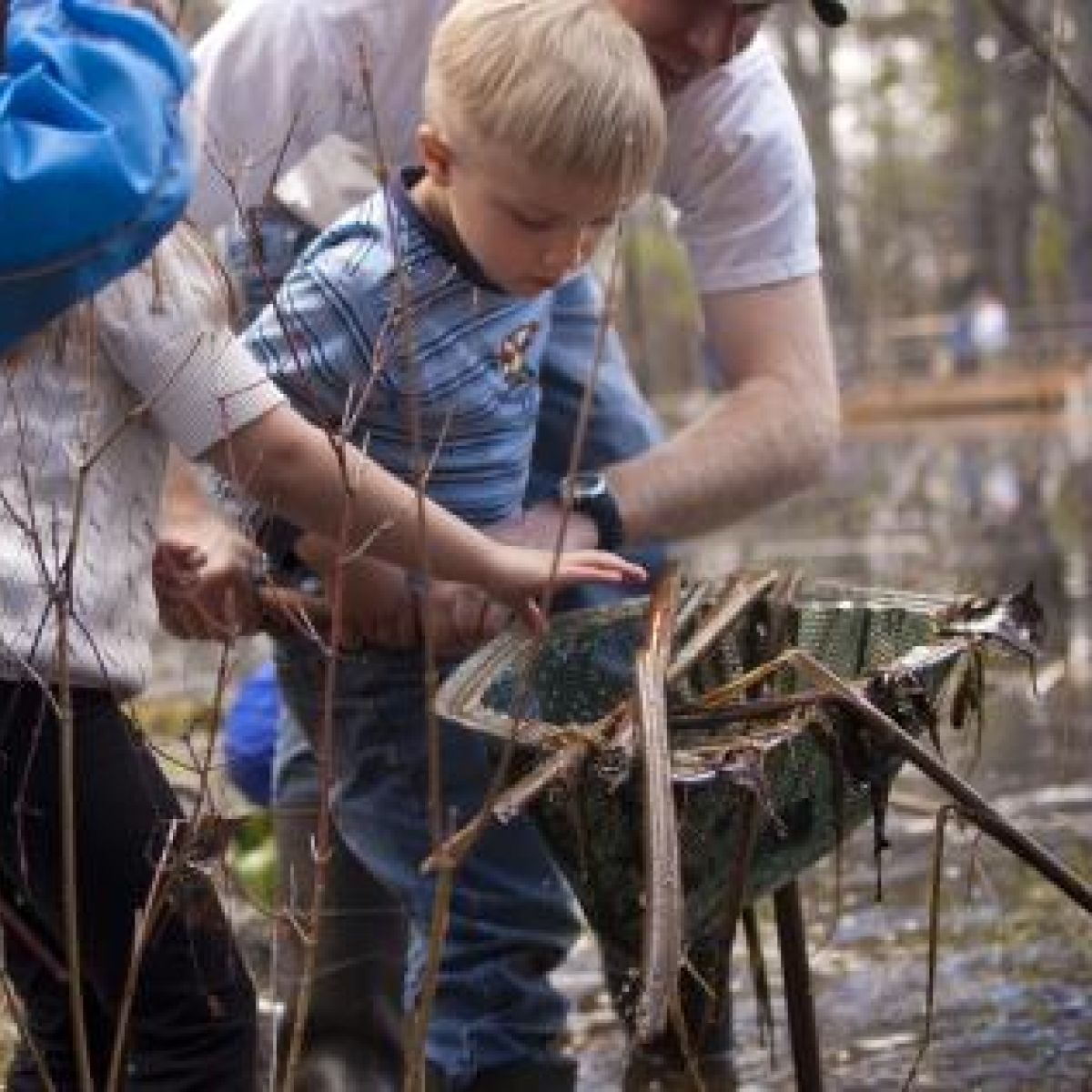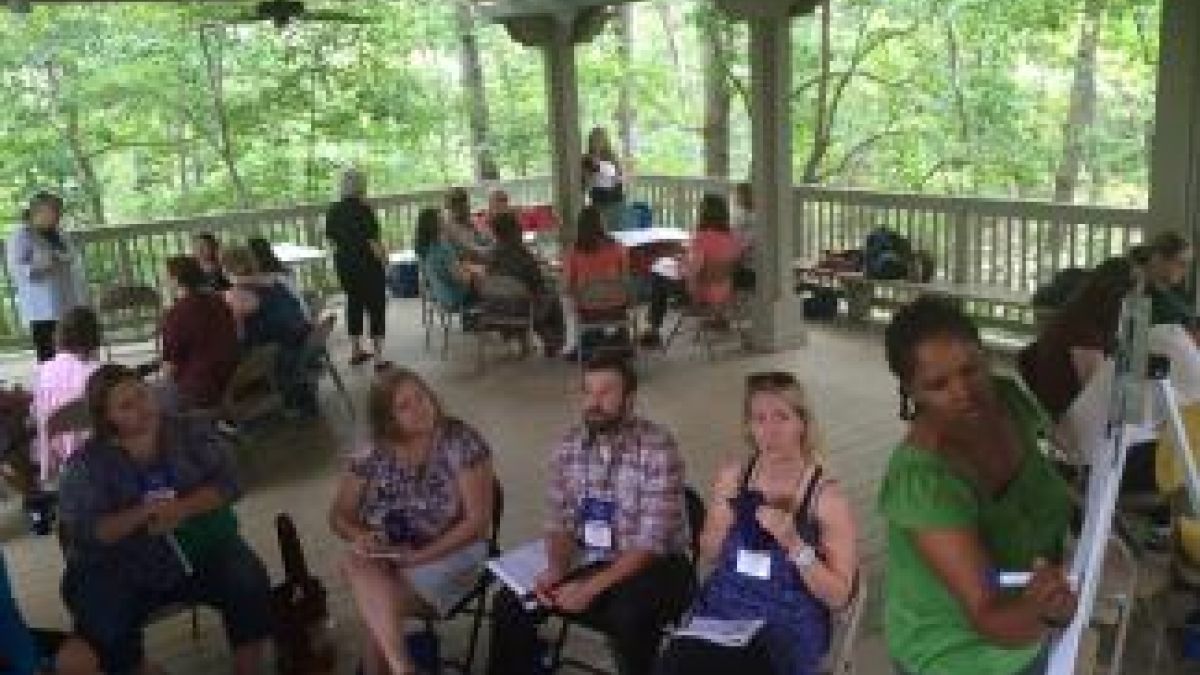
Natural Start director Christy Merrick recently talked with Taproot: Journal of Outdoor Education editor Charles Yaple about Natural Start, outdoor education, environmental learning, and creating great educational experiences for young children. The interview was published in Taproot this month. To learn more about Taproot, and the Coalition for Education in the Outdoors, visit their website.
Taproot: Christy, please tell us about the Natural Start Alliance and how it assists the mission of the North American Association for Environmental Education (NAAEE).
Merrick: Natural Start was created as an initiative of NAAEE to support and expand early childhood environmental education. While NAAEE aims to build environmental literacy and civic engagement across all sectors of society, Natural Start’s role is to begin that effort from birth. We do that by fostering an alliance of educators, parents, and organizations that advocate for early childhood environmental education, promote research in the field, and provide professional development for educators.
Taproot: Why do you believe early childhood is a critical time for children to connect with nature?

Merrick: In recent decades, scientists have discovered how critically formative the first years of life are for human development and future success. At the same time, research has demonstrated very compellingly that high-quality early childhood education is an investment that pays dividends in terms of future learning, earning, and health. Over and over again, research tells us that early experiences make a difference for a lifetime.
Nature—natural environments, natural materials, wild plants and animals, etc.—provides endless and varied opportunities to engage and support children’s overall development, and to help build a foundation for environmental literacy. In those critical early years, our aim is to use nature and the environment to engage children, to spur them to ask questions and search for solutions, to work together, to care for other living things, to cultivate a sense of wonder, and build other skills that help children grow into engaged global citizens.
Taproot: What are the essential things to include in an early childhood environmental education program?
Merrick: At its heart, early childhood environmental education forges a bond between children and nature. For educators who are used to working with older children, youth, or adults, there is sometimes a tendency to do the same kinds of activities that are common with older audiences, but with simpler language or a shorter time span. But young children’s brains work very differently, and education for them requires a different kind of approach. Play is at the heart of programs for young children (and play probably ought to play a larger role in programs for older children and adults, too) because, as we say in early childhood education, play is learning.
If you are interested in the details of what high-quality early childhood environmental education entails, NAAEE publishes Early Childhood Environmental Education Programs: Guidelines for Excellence as part of the National Project for Excellence in Environmental Education. The guidelines lay out key characteristics of quality programs, and there’s an accompanying rating scale to help evaluate programs. The guidelines provide guidance on program philosophy, developmentally appropriate practices, the role of play and exploration, creating a curriculum framework, places and spaces for education programs, and educator preparation.
Taproot: Considering the hectic lifestyle of modern families (both parents working), how do you try to encourage “getting the kids outdoors” on a regular basis?

Merrick: I have two children, so I completely understand how busy life gets. But there are some strategies that can help. First, we suggest making outdoor time a priority. It can be hard to get to things even if we know they’re important, but the first step is acknowledging that it is a priority and that you want to make time for it.
Second, we tell parents not to overthink it. For young children, unstructured play is a powerful way to learn. That’s great news for parents, because that means that they don’t have to know a lot or do a lot: Simply playing in and exploring natural environments with a young child promotes learning and development. You can do more, but just playing is a great start. The Children and Nature Network offers an excellent program called Family Nature Clubs that can help families get outside together on a regular basis. There are no lessons, no assigned readings. They just go out and play together.
And third, I think it’s important to remember that nature is all around us. I live in an urban environment, but I try to help my children see the plants and animals around us all the time. We notice what kinds of birds are perched on the power lines behind our house. We notice the lizards in the trees next to our windows. We check on spiders in the parking lot to see if they moved their web from where we noticed them the day before. We try to be aware of the natural world in our everyday lives, so that it doesn’t always have to be a separate, scheduled event.
Taproot: In 2013, the Center for Disease Control reported 300,000 cases of Lyme disease in the USA. The International Lyme Associated Diseases Society believes this number is far short of actual cases. Do you perceive the escalating incidences of tick borne (Lyme) diseases to be a major hurdle in your efforts to get children outdoors?
Merrick: In certain areas of the US, ticks are understandably a real concern for parents and educators. But, to date, I have not heard any recommendation from a medical or public health group that suggests children should stop playing outside because of the risk of Lyme disease. It’s very important to keep this issue within the realm of science and reason and not allow fear to escalate concerns more than is appropriate.
Outdoor educators are experts in managing risks outdoors, and, as such, parents should look to them as a trusted source for clear, accurate information about the risks of ticks and how to reduce the risk of Lyme disease. I think that, as a field, our consistent message should be that outdoor play is healthy and deeply beneficial, and if you live somewhere that ticks are common, there are simple, common-sense steps you can take to reduce your risk.
Taproot: In addition to parents and preschools, what other settings can assist your mission? How does the Alliance try to facilitate their involvement?
Merrick: We often broadly group approaches to education as “formal” or “informal.” A formal setting refers to a school, preschool, or childcare setting. An informal setting refers to all those places where learning happens on a more free-choice basis, such as zoos, aquariums, nature centers, children’s museums, and so on. We work with many schools, but we also partner with a variety of groups that operate in that “informal” sphere to help bring a focus on young children and their families.

San Antonio Family Nature Club
As an example, we are helping to advise the Association of Zoos and Aquariums (AZA) on a large grant program to promote family nature play at zoos and aquariums. Zoos and aquariums receive over 100 million visitors every year, and many visit because they want a fun, educational experience for their children. This grant project helps zoos and aquariums partner with other community-based, nature-focused organizations to create opportunities for families to have extended contact with nature in their communities. In the first year, the vast majority of families participating in these programs attended with young children. So there is tremendous demand for early childhood environmental education. We just need to expand the opportunities and ensure that the quality is top notch.
Taproot: Public school teachers interested in taking children outdoors often report lack of support from administrators. School authorities seem to be presently caught up in stressing science, technology, and math as the core elements of curriculum. How do you convince administrators that children need regular contact with nature and that providing opportunities can assist curriculum goals?

Chippewa Nature Center Preschool
Merrick: I’ve been in the field of environmental education for almost 20 years, and I have heard this issue since my first day on the job: environmental education is often regarded as something “extra” that has to be squeezed into an already-packed school curriculum. We have to do better as a field at making the case for how outdoor, nature-rich learning is an inexpensive, effective strategy for enhancing education, not another burdensome requirement. NAAEE is working on a project now to use peer-reviewed research to more forcefully make the case that environmental education is a vital tool to spur student achievement.
NAAEE and its partners also are hopeful about the Next Generation Science Standards as a way to infuse more outdoor and environmental education—and approaches used in environmental education, such as project-based learning—in schools. And while these new standards do not apply to preschools, preschool educators do look to them for guidance about the kinds of essential skills that they should be starting to develop in children to help them be successful in school. So I am hopeful that the new standards will encourage more inquiry-based, outdoor learning in preschools, too.
Taproot: Richard Louv, Christopher Uhl (Developing Ecological Consciousness: The End of Separation) and others suggest that religion may be the most powerful ally to help reconnect people to nature. Your thoughts, experience please.
Merrick: This is a fascinating area. According to our friends at the National Religious Partnership for the Environment (NRPE), some 25% of children attend a faith-based early childhood education program. We are working with NRPE to identify ways to bring more environmental education to faith-based preschools. And some scholars, such as Deborah Schein, are doing fascinating work around children’s spiritual development. Dr. Schein’s research suggests that nature can be a powerful force in shaping children’s spiritual development. Of course, faith-based preschools are not only focused on spiritual development, but also children’s overall development and preparation for school. So there are many reasons why it makes sense to offer environmental education to these institutions as a way to help them meet their goals.
Taproot: What are the major challenges facing the Alliance and the North American Association for Environmental Education? Please share any new initiatives being considered to address the challenges.
Merrick: I think one challenge for an organization such as NAAEE is serving such a diverse field. People who work in environmental education all work toward a goal of building environmental literacy and making a better world, but they do it in so many different ways, with so many different audiences, in so many different venues, and work on so many different issues (climate, oceans, community development, water conservation, etc.). NAAEE is working to help define the field in a way that honors all of these different approaches so that we can better represent what they do, advance their interests, and foster connections across the field.

As an example within Natural Start, nature-based education providers—nature preschools, forest kindergartens, and the like—are working toward advancing early childhood environmental education, but they have very specific approaches and professional requirements, and they need specific professional development and professional standards. These schools teach children outdoors for most or, in some cases, all of the school day. This is a very unique approach to education. So we are creating a council on nature-based early childhood education within the Alliance to foster that professional support through a national conference, setting standards for the field, and more. The council will advance the specialized interests of nature-based education providers, while Natural Start also represents the early childhood environmental education field more broadly.
Taproot: Do you have additional comments you might want to share with our outdoor education audience?
Merrick: I think, as a society, we have historically undervalued early childhood education because we did not fully understand how vitally important the first years of life are. Now that we have learned so much about how children learn as infants, toddlers, and preschoolers, and the impact of that learning for a lifetime, we must start paying much more attention to the education of young children.
This is beginning to happen nationally with the expansion of access to high-quality early childhood education programs. Republicans and Democrats in states and cities across the country are working together on this goal, which everyone seems to agree is good for our future. The outdoor and environmental education fields should not be late to this party. We should be leading the way toward more and better opportunities for young children to learn and grow through outdoor and environmental learning.
Outdoor and environmental education are so tightly interwoven, and nowhere more than in early childhood. For young children, outdoor learning often is environmental education. I hope that we can work collaboratively on developing more and better opportunities for all young children to experience the benefits of outdoor play and learning.